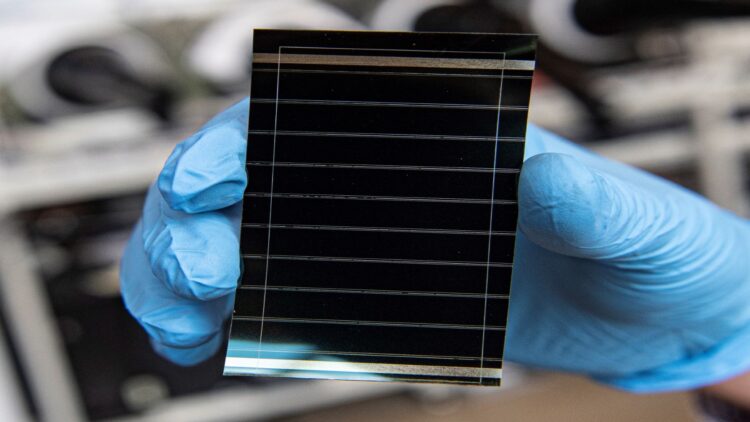There is a new plan in the pipeline for the Japanese and it is reported they plan to consider the promotion and use of perovskite solar cells. The plan is to also cover 20 gigawatts of electricity by the year 2040. This has been announced by Japan’s energy ministry per media reports.
Japan unveils perovskite solar panels
The Japanese plan is also part of efforts to expand and widen the use of renewable energy sources by supporting the introduction of next-generation technologies at a time when the country is racing to reduce carbon emissions.
EVWind has it that the Japanese ministry aims to include the plan in the country’s basic energy program that the government will update in fiscal 2024, which ends next March.
“The existing energy program calls for increasing the share of renewable energy sources to 36-38 percent of power generation in fiscal 2030, compared with 22.9 percent in fiscal 2023,” published the portal.
“The new program, which sets targets for fiscal 2040, is expected to further increase the share of renewables in anticipation of the expansion of perovskite solar cells.”
Japanese websites report that companies are moving to develop perovskite solar cells as a promising technology for expanding the use of renewable energy sources.
Sekisui Chemical is set to commercialize such cells in 2025, with plans to install them in high-rise buildings in Tokyo with Tokyo Electric Power Company Holdings and others.
What is a perovskite solar cell?
In describing a perovskite solar panel, another publication focusing on energy news reports that these panels are a family of materials that have shown potential for high performance and low production costs in solar cells.
The name “perovskite” comes from their crystal structure and these materials are utilized in other energy technologies, such as fuel cells and catalysts.
“Perovskites commonly used in photovoltaic (PV) solar cells are more specifically called “metal-halide perovskites” since they are made of a combination of organic ions, metals, and halogens; perovskites in other applications may be made of oxygen instead of halogens and are usually entirely inorganic,” it said.
“Metal-halide perovskites are the main absorbing material, or “active layer,” in a perovskite solar cell. In this potentially inexpensive technology, a thin layer of perovskite absorbs light, which excites charged particles called electrons; when these excited electrons are extracted, they generate electric power.
“Perovskite cells are referred to as thin-film because they require much thinner active layers relative to crystalline silicon PV.”
Why perovskite solar panels show progress
Looking at the information that has been registered over the past few years, Perovskite solar cells have shown remarkable progress with rapid increases in efficiency, from reports of about 3% in 2009 to over 26% today on small area devices (about 0.1 cm2).
According to the report, Perovskite-silicon tandem cells have reached efficiencies of almost 34% while perovskite solar cells have become highly efficient in a very short time, perovskite PV is not yet manufactured at scale and a number of challenges must be addressed before perovskites can become a competitive commercial PV technology.
In looking at how these solar panels are made, because the technology is still in development, the details of each step can vary widely between research groups.
“This includes the elements that comprise the perovskite materials, cell and module assembly, and the tests performed on the finished product,” added the US Department of Energy.
Touching on the potential benefits of using a perovskite solar panel, the website wrote that Perovskites appear to be more resilient to imperfections in their crystal structure relative to other conventional semiconductors.
Furthermore, they are able able convert light to electrical power at a similar efficiency to silicon.

